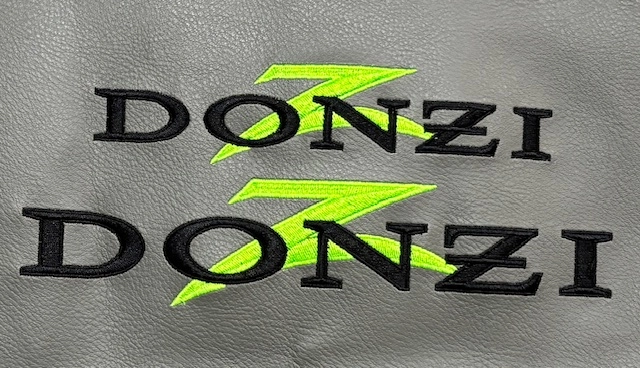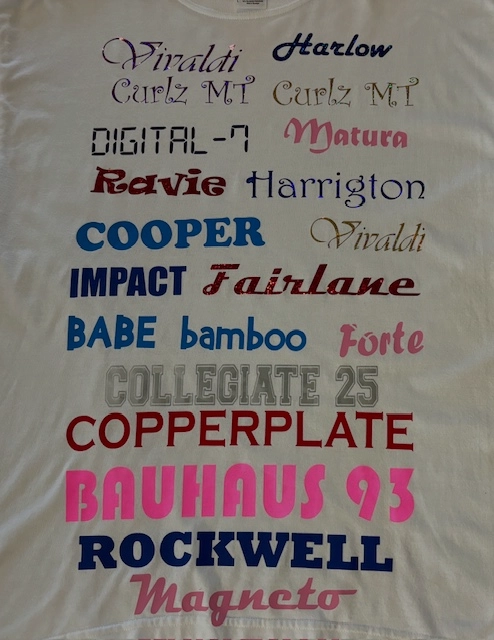Personalized School Uniforms with High-Quality Embroidery Solutions
Personalized School Uniforms with High-Quality Embroidery Solutions
Blog Article
The Art of Custom-made Embroidery: Unlocking the Secrets to Creating Distinct and Unforgettable Designs
The tricks to creating personalized embroidery designs that mesmerize the eye and leave a long lasting impression lie in a fragile equilibrium of method, imagination, and focus to information. As we dive right into the world of customized embroidery, we discover the nuanced interplay between string choice, stitch complexity, and layout personalization that elevates a plain garment to a job of art.
Choosing the Right Needlework Threads
When picking embroidery threads, what vital factors should you consider to guarantee the very best results for your custom-made designs? The selection of needlework thread is vital in establishing the last outcome of your embroidered style. One of the main considerations is the material of the string. Various materials such as cotton, polyester, rayon, and silk supply differing levels of sheen, sturdiness, and appearance. It is important to pick a thread material that enhances the fabric you are embroidering on and lines up with the wanted look of the layout.
Thicker strings can add dimension and texture to your design, while finer strings are ideal for elaborate details and small message. In addition, considering the color fastness and washability of the string is vital to make sure that your custom-made styles maintain their quality and vibrancy over time.
Discovering Various Stitch Methods
To explore the world of 'Discovering Various Stitch Strategies', one must realize the complexities and subtleties that each stitching technique brings to the art of embroidery. Different stitch techniques not only add visual passion however likewise add to the overall appearance and measurement of the design. One preferred stitch technique is the satin stitch, which involves closely stuffed parallel stitches to develop a smooth and glossy surface area, perfect for completing forms and creating bold outlines.
On the other hand, the backstitch is a flexible method usually used for detailing and adding great details. It involves sewing backward to produce a solid line of embroidery. In addition, the French knot stitch adds a responsive component to styles, perfect for producing textured accents like blossom facilities or attractive touches.
Exploring various stitch techniques permits embroiderers to play with light, darkness, and depth within their layouts, raising the aesthetic appeal and creative quality of their embroidery tasks. By mastering different stitching methods, one can unlock limitless opportunities for developing unique and memorable custom embroidery pieces.
Incorporating Personalized Layout Aspects
Having discovered the ins and outs of various stitch methods such as the satin stitch, backstitch, and French knot, the focus now moves towards incorporating tailored design elements in custom needlework jobs. Individualized style aspects play a critical function in making needlework jobs truly distinct and remarkable. One means to incorporate personalization is by adding initials, names, or considerable days to the style. This not just includes a tailored touch yet also improves the sentimental worth of the needlework piece.
Another way to incorporate personalized layout components is by consisting of signs or concepts that hold unique meaning to the recipient or mirror their passions and character. Incorporating a favored flower, pet, or hobby-related symbol can make the embroidery style much more purposeful and personalized. Furthermore, selecting colors that why not try these out resonate with the recipient or align with the intended theme can additionally enhance the personalization of the needlework project.
Mastering the Art of Color Sychronisation

One key element of color sychronisation is comprehending color concept. This consists of recognizing just how various shades interact with each other, the emotions they share, and how they can be combined to develop aesthetically appealing designs. By applying color theory principles, embroiderers can create harmonious shade palettes that enhance the overall appearance of the layout.
Furthermore, taking note of contrast is vital in shade control. Making use of contrasting shades can aid particular components of the layout pop, boost readability, and develop a visually dynamic needlework piece. By mastering the art of color control, embroiderers can raise their styles and produce memorable items that reverberate with clients and audiences alike.
Enhancing Texture With Advanced Embroidery Stitches

French knots, for instance, are perfect for adding small, raised dots to your style, simulating the appearance of grains or producing a textured surface. Bullion knots, on the other hand, can be utilized to produce twisted, ropelike aspects that include an elegant feeling to the needlework. Seed sewing entails small, scattered stitches that can complete locations with a polychromatic appearance, while turkey job produces fluffy, dimensional accents reminiscent of animal use this link hair or foliage. Explore these sophisticated needlework stitches allows you to push the boundaries of traditional needlework and produce really distinct and visually enticing appearances in your styles.
Conclusion
To conclude, the art of custom-made embroidery includes a mix of selecting the appropriate threads, discovering different stitch techniques, including customized style aspects, grasping color control, and enhancing texture with advanced stitches. By recognizing and applying these vital components, embroiderers can develop one-of-a-kind and unforgettable designs that display their creativity and skill. Needlework fanatics can unlock the tricks to producing stunning and bespoke items that stand apart and leave an enduring impression.
Report this page